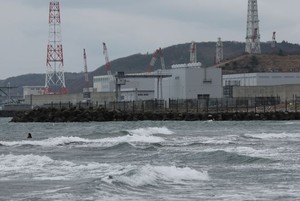By LISA VOGT/ Special to Asahi Weekly
March 5, 2024 at 07:00 JST
More than 10 times?! This is the reaction I get when I tell people how many times I’ve climbed to the summit of Japan’s highest peak.
More often than not, this is followed with, “There’s a saying, ‘A wise person climbs Mount Fuji once, only a fool climbs it twice.’"
I wonder what that makes me. A super fool? No, I’m a super fan who’s rewriting conventional wisdom with each ascent!
Japan’s highest (3,776 meters) and most revered mountain was designated a World Heritage Site in 2013, recognizing it as a symbol of Japan. So, the mountain is owned by the central government, right? Not really.
It turns out Mount Fuji, from the eighth station upward, is privately owned.
Tokugawa Ieyasu (1542-1616), the first ruler of the Tokugawa Shogunate, gave it to a Shinto shrine in 1606 — Sengen Taisha (浅間大社), based in Fujinomiya, Shizuoka Prefecture. Is that legit?
Well, I guess it is when you’re the muckety-muck. It was confiscated in the Meiji Era (1868-1912), but after battling it out in court, the land was returned to the shrine in 2004.
"San" is an honorific added to Japanese names to show respect, like Sasaki-san and Lisa-san. Many foreigners wrongly assume that the Japanese revere Mount Fuji so much that they put san after the mountain’s name, calling it "Fuji-san."
A little knowledge is a dangerous thing. I wonder how many people believe that in the United States, there’s still a lot of racism, and most Americans own guns, or if you’re in a traffic accident, for example, hospitals will refuse to treat you without health insurance.
There are multiple theories as to how the mountain got its name. Fuji can mean mountain of abundant soldiers, immortal or deathless mountain, and peerless or like no other mountain. Some believe it’s an Ainu word that means “fire deity.”
The other day, I learned a new Japanese word that made me laugh: "fujibitai." It’s kind of strange in English, too: widow’s peak. It refers to a person’s forehead hairline.
Traditionally, for Japanese women, when the hair is in the shape of Mount Fuji, she’s considered a beauty, or so I heard. I can’t help but think of Mickey Mouse.
Fujisan is an active stratovolcano that last erupted in 1707, which isn’t that long ago.
No one knows when the next time will be, but I hope that after the dust (lava?) settles, the shape will remain as graceful and iconic as the mountain depicted in old woodblock prints.
If you haven’t climbed Mount Fuji yet, an ultimate peak moment awaits you.
***
This article by Lisa Vogt, a Washington-born and Tokyo-based photographer, originally appeared in the Jan. 7 issue of Asahi Weekly. It is part of the series "Lisa’s UNESCO World Heritage Sites in Japan," which depicts various parts of the country through the perspective of the author, a professor at Aoyama Gakuin University.




















A peek through the music industry’s curtain at the producers who harnessed social media to help their idols go global.
A series based on diplomatic documents declassified by Japan’s Foreign Ministry
Here is a collection of first-hand accounts by “hibakusha” atomic bomb survivors.
Cooking experts, chefs and others involved in the field of food introduce their special recipes intertwined with their paths in life.
A series about Japanese-Americans and their memories of World War II